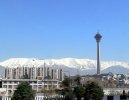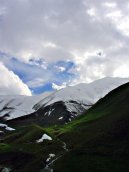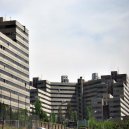Iran
Iran: Travel tips, articles, photos, gallery, cities database, population, pics, flags, statistics, free maps online
Back to Countries, Click to read the whole article: Iran
| Introduction - Iran: | | Location - Iran: | | People - Iran: | | Government - Iran: | Country name | conventional long form: Islamic Republic of Iran
conventional short form: Iran
local long form: Jomhuri-ye Eslami-ye Iran
local short form: Iran
former: Persia | | Government type | theocratic republic | | Capital | name: Tehran
geographic coordinates: 35 40 N, 51 25 E
time difference: UTC+3.5 (8.5 hours ahead of Washington, DC during Standard Time) | | Administrative divisions | 30 provinces (ostanha, singular - ostan); Ardabil, Azarbayjan-e Gharbi, Azarbayjan-e Sharqi, Bushehr, Chahar Mahall va Bakhtiari, Esfahan, Fars, Gilan, Golestan, Hamadan, Hormozgan, Ilam, Kerman, Kermanshah, Khorasan-e Janubi, Khorasan-e Razavi, Khorasan-e Shemali, Khuzestan, Kohgiluyeh va Buyer Ahmad, Kordestan, Lorestan, Markazi, Mazandaran, Qazvin, Qom, Semnan, Sistan va Baluchestan, Tehran, Yazd, Zanjan | | Independence | 1 April 1979 (Islamic Republic of Iran proclaimed) | | National holiday | Republic Day, 1 April (1979) | | Constitution | 2-3 December 1979; revised 1989 to expand powers of the presidency and eliminate the prime ministership | | Legal system | based on Sharia law system; has not accepted compulsory ICJ jurisdiction | | Suffrage | 18 years of age; universal | | Executive branch | chief of state: Supreme Leader Ali Hoseini-KHAMENEI (since 4 June 1989)
head of government: President Mahmud AHMADI-NEJAD (since 3 August 2005); First Vice President Parviz DAVUDI (since 11 September 2005)
cabinet: Council of Ministers selected by the president with legislative approval; the Supreme Leader has some control over appointments to the more sensitive ministries
note: also considered part of the Executive branch of government are three oversight bodies: 1) Assembly of Experts, a popularly elected body of 86 religious scholars constitutionally charged with determining the succession of the Supreme Leader - based on his qualifications in the field of jurisprudence and commitment to the principles of the revolution, reviewing his performance, and deposing him if deemed necessary; 2) Expediency Council or the Council for the Discernment of Expediency, is a policy advisory and implementation board consisting of permanent members, who number over 40 and represent all major government factions and include the heads of the three branches of government, and the clerical members of the Council of Guardians (see next); permanent members are appointed by the Supreme Leader for five-year terms; temporary members, including Cabinet members and Majles committee chairmen, are selected when issues under their jurisdiction come before the Expediency Council; the Expediency Council exerts supervisory authority over the executive, judicial, and legislative branches and resolves legislative issues on which the Majles and the Council of Guardians disagree and since 1989 has been used to advise national religious leaders on matters of national policy; in 2005 the Councils powers were expanded, at least on paper, to act as a supervisory body for the government; 3) Council of Guardians of the Constitution or Council of Guardians or Guardians Council is a 12-member board made up of six clerics chosen by the Supreme Leader and six jurists selected by the Majles from a list of candidates recommended by the judiciary (which in turn is controlled by the Supreme Leader) for six-year terms; this Council determines whether proposed legislation is both constitutional and faithful to Islamic law, vets candidates for suitability, and supervises national elections
elections: Supreme Leader appointed for life by the Assembly of Experts; Assembly of Experts elected by popular vote for an eight-year term; last election held 15 December 2006 concurrently with municipal elections; president elected by popular vote for a four-year term (eligible for a second term and third nonconsecutive term); last held 17 June 2005 with a two-candidate runoff on 24 June 2005 (next presidential election slated for 2009)
election results: Mahmud AHMADI-NEJAD elected president; percent of vote - Mahmud AHMADI-NEJAD 62%, Ali Akbar Hashemi-RAFSANJANI 36% | | Legislative branch | unicameral Islamic Consultative Assembly or Majles-e-Shura-ye-Eslami or Majles (290 seats; members elected by popular vote to serve four-year terms)
elections: last held 20 February 2004 with a runoff held 7 May 2004 (next to be held in February 2008)
election results: percent of vote - NA; seats by party - conservatives/Islamists 190, reformers 50, independents 43, religious minorities 5, and 2 seats unaccounted for | | Judicial branch | The Supreme Court and the four-member High Council of the Judiciary have a single head and overlapping responsibilities; together they supervise the enforcement of all laws and establish judicial and legal policies; lower courts include a special clerical court, a revolutionary court, and a special administrative court | | Political parties and leaders | formal political parties are a relatively new phenomenon in Iran and most conservatives still prefer to work through political pressure groups rather than parties, and often political parties or groups are formed prior to elections and disbanded soon thereafter; a loose pro-reform coalition called the 2nd Khordad Front, which includes political parties as well as less formal pressure groups and organizations, achieved considerable success at elections to the sixth Majles in early 2000; groups in the coalition include: Islamic Iran Participation Front (IIPF), Executives of Construction Party (Kargozaran), Solidarity Party, Islamic Labor Party, Mardom Salari, Mojahedin of the Islamic Revolution Organization (MIRO), and Militant Clerics Society (Ruhaniyun); the coalition participated in the seventh Majles elections in early 2004; following his defeat in the 2005 presidential elections, former MCS Secretary General Mehdi KARUBI formed the National Trust Party; a new apparently conservative group, the Builders of Islamic Iran, took a leading position in the new Majles after winning a majority of the seats in February 2004 | | Political pressure groups and leaders | the Islamic Revolutionary Party (IRP) was Irans sole political party until its dissolution in 1987; Iran now has a variety of groups engaged in political activity; some are oriented along political lines or based on an identity group; others are more akin to professional political parties seeking members and recommending candidates for office; some are active participants in the Revolutions political life while others reject the state; political pressure groups conduct most of Irans political activities; groups that generally support the Islamic Republic include Ansar-e Hizballah, Muslim Students Following the Line of the Imam, Tehran Militant Clergy Association (Ruhaniyat), Islamic Coalition Party (Motalefeh), and Islamic Engineers Society; active pro-reform student groups include the Office of Strengthening Unity (OSU); opposition groups include Freedom Movement of Iran, the National Front, Marz-e Por Gohar, and various ethnic and Monarchist organizations; armed political groups that have been repressed by the government include Mujahidin-e Khalq Organization (MEK or MKO), Peoples Fedayeen, Democratic Party of Iranian Kurdistan (KDPI), and Komala | | International organization participation | ABEDA, CP, ECO, FAO, G-15, G-24, G-77, IAEA, IBRD, ICAO, ICC, ICCt (signatory), ICRM, IDA, IDB, IFAD, IFC, IFRCS, IHO, ILO, IMF, IMO, IMSO, Interpol, IOC, IOM, IPU, ISO, ITSO, ITU, MIGA, NAM, OIC, OPCW, OPEC, PCA, SCO (observer), UN, UNCTAD, UNESCO, UNHCR, UNIDO, UNMEE, UNWTO, UPU, WCL, WCO, WFTU, WHO, WIPO, WMO, WTO (observer) | | Diplomatic representation in the us | none; note - Iran has an Interests Section in the Pakistani Embassy; address: Iranian Interests Section, Pakistani Embassy, 2209 Wisconsin Avenue NW, Washington, DC 20007; telephone: [1] (202) 965-4990; FAX [1] (202) 965-1073 | | Diplomatic representation from the us | none; note - the American Interests Section is located in the Swiss Embassy compound at Africa Avenue, West Farzan Street, number 59, Tehran, Iran; telephone 021 8878 2964 or 021 8879 2364; FAX 021 8877 3265 | | Flag description | three equal horizontal bands of green (top), white, and red; the national emblem (a stylized representation of the word Allah in the shape of a tulip, a symbol of martyrdom) in red is centered in the white band; ALLAH AKBAR (God is Great) in white Arabic script is repeated 11 times along the bottom edge of the green band and 11 times along the top edge of the red band | |
| Economy - Iran: | | Communications - Iran: | | Transportation - Iran: | | Military - Iran: |
This page was last updated on 16 September, 2007
Source: CIA >>> |




